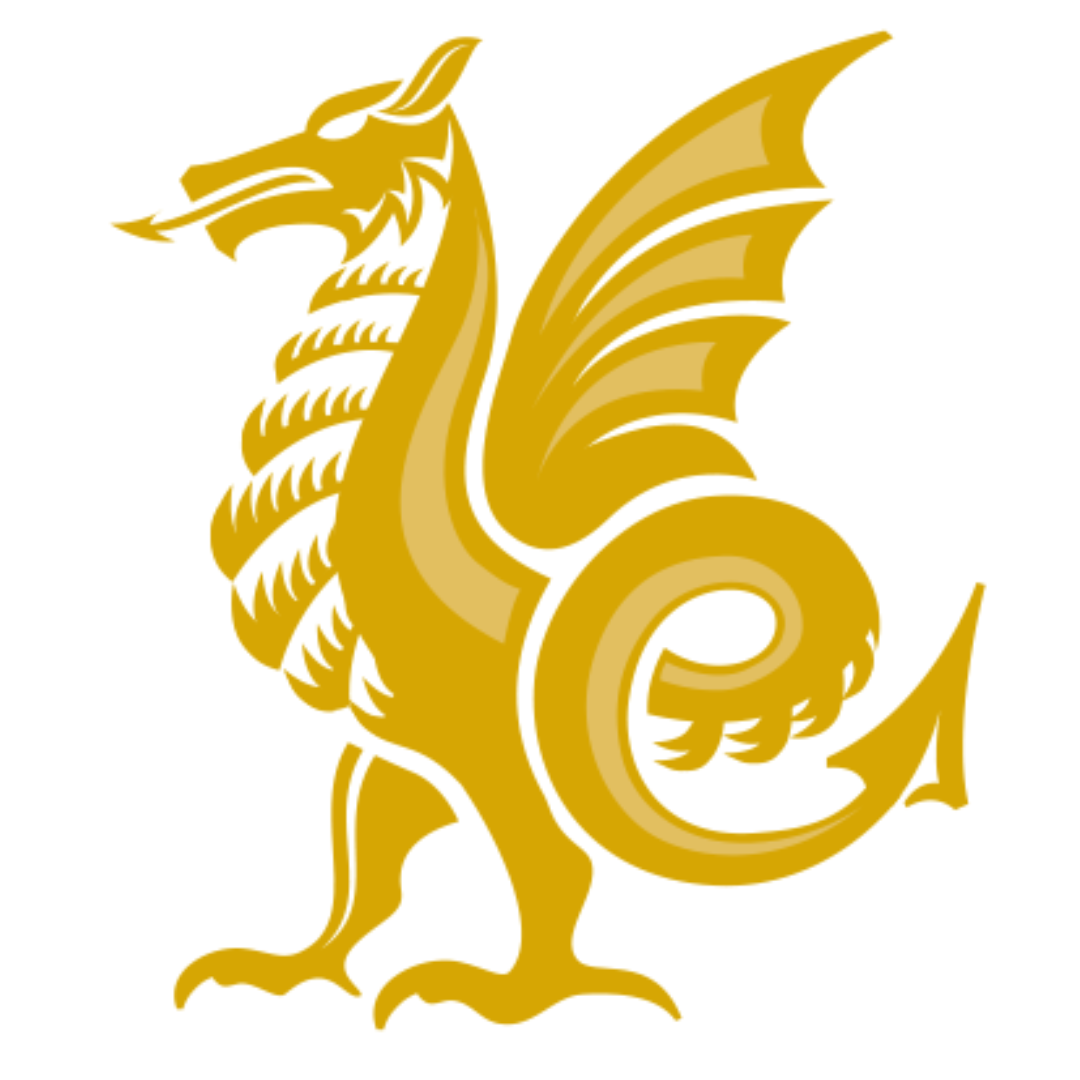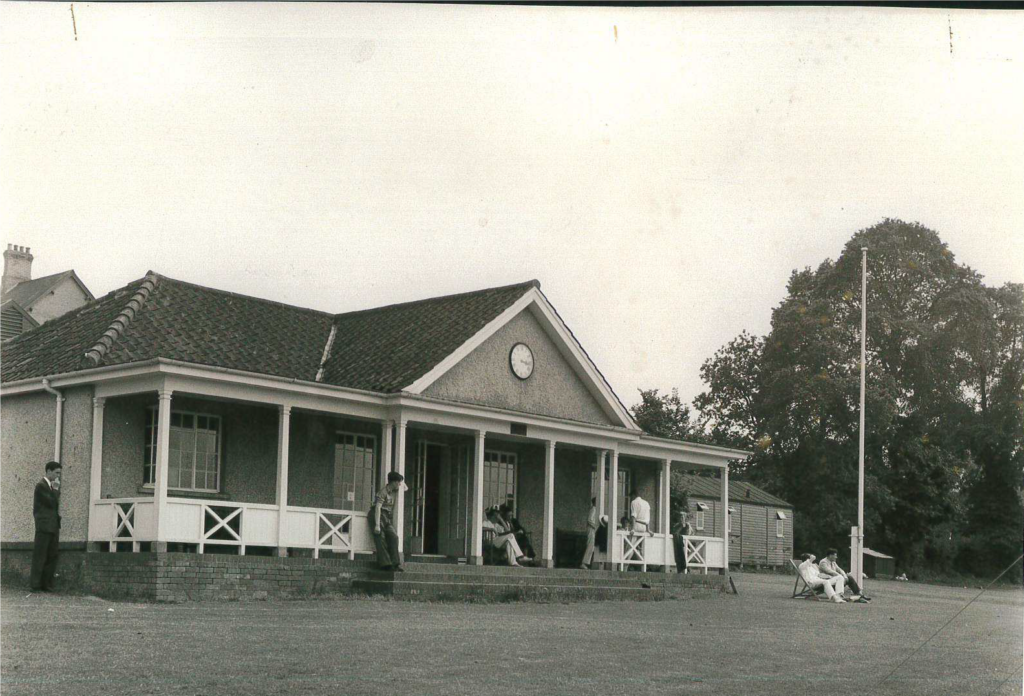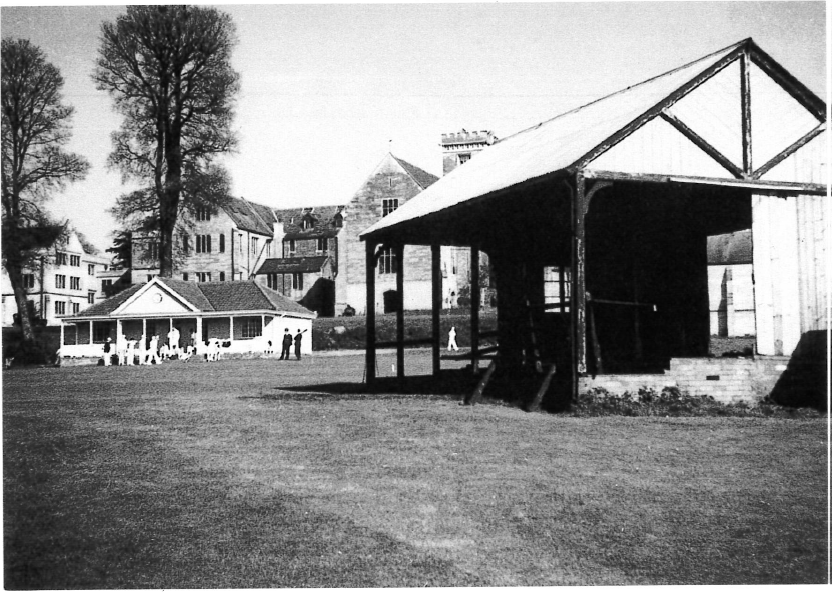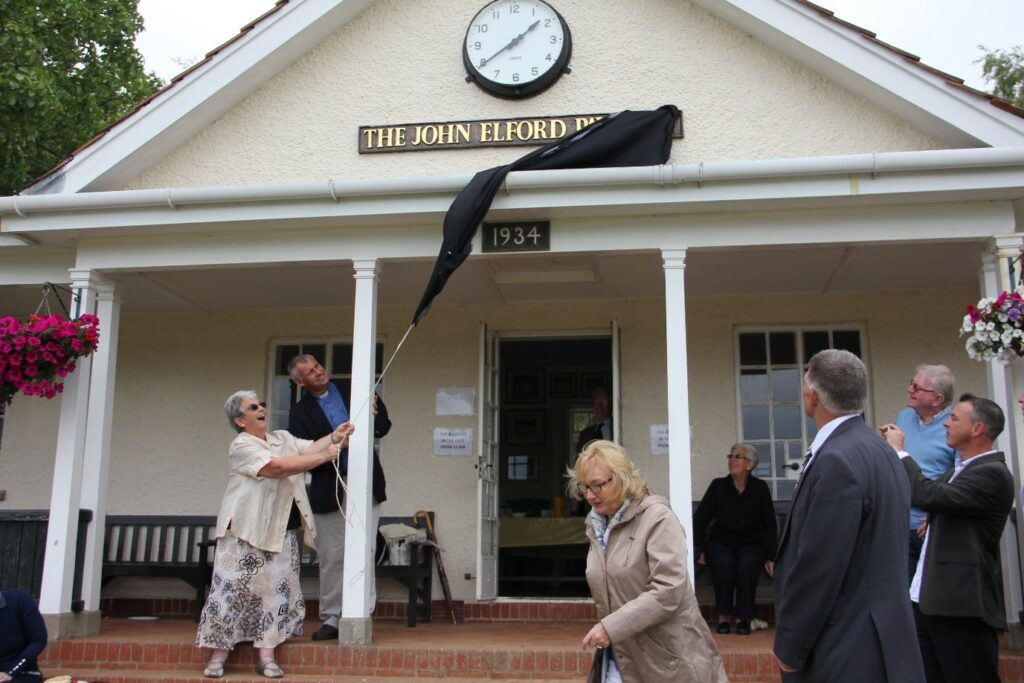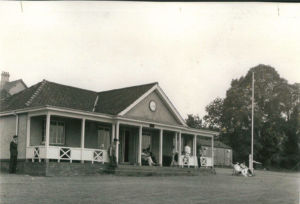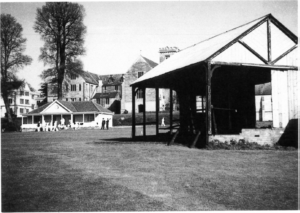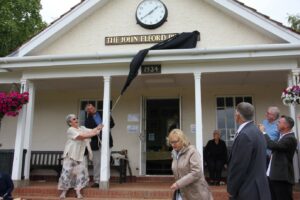Cricket has always been a major sport at the school and has been played on ‘The Lower’ ever since the school had use of it. Until 1887, the year the name of the school changed from Wesleyan College, Taunton, to Queen’s College, the Lower Field was rented from a landowner. When these eight acres together with the six acres known as the ‘Other Field’ and cottage adjacent to ‘The Lower’ were advertised as being sold by auction, four of the Directors decided to pool their resources to secure the land for the school. Five years later the school could afford to buy the 14 acres and the cottage from the Directors.
Subsequently, the school was able to erect a pavilion, but not the existing one. The original pavilion was located alongside the line of trees that mark the edge of ‘The Lower’. This was nothing more than a glorified if large shed with three sides open to the elements. Its frame was constructed of iron and steel and the roof comprised ridged sheets of corrugated iron. It was not until 1934 that the present pavilion was built. £650 had been raised from the contributions of 200 OQs and 50 parents and friends though a further £100 was needed to cover costs.
The advent of a new pavilion was eagerly anticipated not least because the 1st XI had enjoyed several successful seasons since 1929 – indeed, through the 1920s too. It was completed in the first week of the summer term 1934, in time for the first school match. Ironically, the playing record of the school team that year was disappointing. Nonetheless, cricket now had a pavilion of which players and staff could be proud. Players and spectators were able to sit on comfortable chairs of various designs in front of the building and, as anyone familiar with the ground will know, there are few finer places to watch cricket, especially on a warm sunny afternoon. The old pavilion was demolished within weeks of the new one opening so the photo showing both pavilions was probably taken in mid May 1934.
On the interior walls of the pavilion were hung photos of the teams dating back to 1871. Alas, this display was disturbed by an unfortunate incident in 1962. On 13 November that year a fire broke out in the pavilion. Fortunately, it was contained quickly enough to prevent the destruction of the whole building. However, some photos were lost, some by water damage in the effort to douse the flames, and the whole collection had to be taken down whilst a full reckoning of the damage was carried out. The display of those photos that survived and those of teams that played in subsequent years was eventually restored but in recent years damp, the result of a leaky roof, has destroyed some of the older ones. Another item partly damaged in the fire was the rugby jersey worn by the All Black No 12, Mark Nicholls, who played against England at Twickenham on 3 January 1925. After that match James Gibbs, OQ, who played No 11 for England that day, swapped his jersey with the New Zealander. Two months later it was acquired by the school following its auction and hung in the pavilion. It can now be seen in the OMR, showing signs of damage caused by the fire. Evidence of the fire is still discernible in the floor of the pavilion. Many may think the coarse surface of the floor to be the result of countless studs on the soles of cricketers’ shoes traipsing through the pavilion. In fact, the unevenness and discolouring of the floor is due to the scorching of it in 1962. The fire was caused by the carelessness of two boys who were smoking in the attic space. The names of these miscreants are known but it is probably best not to name them here.
Three additions to the pavilion are worthy of note. In memory of Willie Morgan who died in 1986, the Old Queenians Association donated a scoreboard which was housed in an extension added to the right of the pavilion. Later, a small group of OQs paid for a weathervane to be placed atop the roof. This was designed by Chris Webb, OQ, and erected in 1981. The names of those who contributed were framed and hung in the pavilion until the weathervane was blown down in a storm in the early 2000s. The glassed frame is now in the school archive. A major improvement to the pavilion was the installation of an electronic scoreboard donated by John Elford in about 2010. Passionate about cricket when a schoolboy, John always returned every summer to watch the match between the OQs and the school and to mark his support for the sport at Queen’s the pavilion was named after him in June 2015. A simple ceremony was held on the day the School played the OQs when his widow, Faith, unveiled his name under the clock.
The quality of the cricket ground itself is something to behold from the pavilion and players over many years have been privileged to bat and bowl on some of the finest pitches in the county. Queen’s has been fortunate to have had a succession of groundsmen with the expertise, energy and enthusiasm to prepare and maintain the square to the highest standard. Furthermore, the outfield was improved hugely when the first astroturf pitch was laid in March 2007. To do this, massive amounts of soil were excavated and placed by the bank dividing Queen’s from the civil service grounds. Indeed, the depth of the soil was such that the bank ceased to exist on the side in question. As a result, the outfield was levelled much to the benefit of not just cricket but also rugby which is played on the outfield in winter. The nets which used to be at the bottom of ‘The Lower’ are rarely used these days as in 2021 the hard surface on the other side of the bank just mentioned was converted into a practice area for cricketers.
Click on the image to expand:



